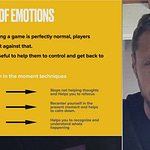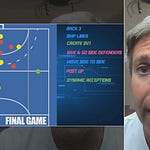The focus? “Defensive Diamonds”—the principles, strengths, and practicalities of the four-player diamond structure, especially when teams are most vulnerable: in transition and counter attack phases. Javier Telechea peels back not just the “how” but the “why,” giving us a framework that runs deeper than chalkboard sketches.
10 Key Takeaways from the Session
Defensive Diamonds Happen Everywhere — But Do Your Players Know Why?
Though the diamond emerges naturally in zonal set-ups, Javier highlights that many players (and some coaches) are only dimly aware of its significance. Step one in his process: explain the why, get buy-in, and then train it, not just brief it.
The Diamond: A Zonal Structure of Four
When defending with fewer numbers—classic counterattack or breakdown situations—Javier’s gold standard is to adopt a diamond of four. The set roles? Pressure on the ball, cover left, cover right, and the safety at the back. It’s a scalable concept, not just a fixed pattern.
Principles for Attacking Teams: “Diamond in the Back”
On attack, teams need a “guard” 5-10 meters behind play, lines that move together, and—crucially—a diamond ready to slow down opposition counters. “It’s not just about numbers at the back, but structure,” Javier stresses.
Two Examples, Two Outcomes














